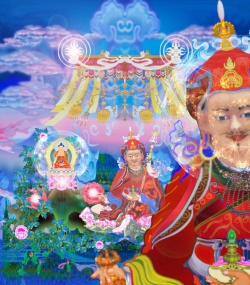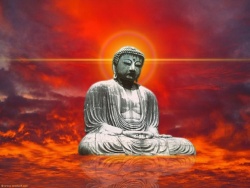A Critical Approach To The Classification Of Buddhist Ethics In Theravada Buddhism by Ven.Sumana
A Critical Approach To The Classification Of Buddhist Ethics In Theravâda Buddhism
By
Ven.Sumana
Mingalarama Pali Monastery
Yangon, Myanmar
Introduction
Ethical conducts play an important role in every school of Buddhism. Buddhists generally believe that they should cultivate ethical values for the replacement of cruel tendencies with noble abilities. The ethics in Theravada perspective is an unconditional code of conduct that leads a way of life to the welfare, peace, and freedom of oneself and others. As it is an unconditional ethical conduct, it is quite critical to exactly define what it really is. There are many different contemporary standpoints on the concept of Buddhist ethics, which is often misunderstood at home and abroad and thus becomes a vital issue among Buddhist thinkers and scholars. It is because of the appearance of various interpretations and contradictory definitions that the exact meaning of its classification has not yet been settled. In classifying Buddhist ethics, it needs to examine the real purpose and motivation of followers, the causes and its effects on individuals and society.
The concept of Buddhist Ethics In Different Perspectives
The term ‘Sîla’ in the Theravada Pâli Canon and its commentaries is the closest word to Ethics. Many Buddhist and non-Buddhist scholars have very often translated ‘Sîla’ as ‘morality or ethical conduct or virtue’. In this respect, the nuance of each word can be basically explained thus: ‘morality’ is used to denote the principles and values of a conduct or behaviour, while ‘ethics’ refers to the critical analysis of those values. ‘Virtue’ means a positive quality of morally good together with good consequences. The fact of the matter is that Sîla is a practice of self-discipline, self-awareness and self-development for the welfare of oneself (attahita) and the welfare of others (parahita).
Ethics in the Western philosophy can be divided roughly into three branches, namely
In brief, the first one is to give an objective account of moral prescriptions, norms, and values of a community together with precepts and principles. The second branch is about general rules and principles of how people ought to act or shape a life. The last one is about providing conceptual meaning and analysis in moral argument. Moreover, theory of virtue ethics seeks a path of self-transformation of the personality through the development of correct habits. It is quite hard to exactly classify Buddhist ethical teachings into any types of such Western models even though Buddhist ethical principles are truly connected with a practice of self-discipline, self-awareness and self-development.
What is the right method to interpret Buddhist ethics certainly provides food for thought. Some scholars like Prof. Damien Keown pointed out that there is no specific Buddhist ethical, political, social theory, arguing that no separate discourses on ethics exist in the early Buddhist sources. They say that only a complicated and profound ethical theory that is inseparable from the rest of Buddhist philosophy is found throughout the canon. Regarding this, Buddhist scholars have paid a great deal of attention to the academic clarifications of Buddhist ethics but they would have seen it differently. On the subject of the minor ethical and moral concepts, there are some differences between Mahãyãna and Theravãda. This can be seen on the practice of observing vegetarianism and of wearing monk’s robes and so forth. But in essence, both schools have an equal vast conception of universal love and compassion for all beings and of freedom from suffering. Buddhist ethical principles are concerned with both physical and verbal factors. They also relate to the mental elements in ultimate sense.
The Concept of Buddhist Ethics and Its Origin
Buddhist ethical concept is mainly based on the Buddha’s Teachings and its long traditions. Buddhists consider that there are many ethical and moral discourses such as Mangala Sutta, Singãlovãda Sutta, Metta Sutta, Sabbãsava Sutta, and Jãtaka texts etc. It is in Mangala Sutta that the Buddha expounded setting oneself in the right course, contentment, gratitude, patience, righteous conduct, and generosity, etc. Of these, generosity (dãna) is widely practiced with reasoned faith in the Triple Gems and Kammic operations at all levels of society in Buddhist countries. This practice is seen as the spiritual development and freedom from self-centered mindset. The other discourses prescribe various moral duties of people’s role in family, social, political and religious affairs. The secular ethical rules found in these discourses are not only for the avoidance of social conflicts but also for the progress of social harmony. In addition, the concept of ethics in Buddhism can be found in the connotation of Pañcasîla, (five precepts), Vinaya (Disciplinary Rules), Kusala (wholesome deed), Akusala (unwholesome deed), Kamma (action), Brahmavihãra (four sublime states), Sîla, (morality or ethical conduct), and Ariya-atthangikamagga, (Noble Eightfold Path).
The development of moral principles in early Buddhism may vary from that of contemporary Buddhism. In the matter of these principles, their original backgrounds, philosophy, different custom and culture of society should be taken into consideration to some extent, too. They can be seen in the stories concerning Disciplinary Rules. With regard to these matters, the Dalai Lama pointed out that Buddhist precepts are interrelated with their time and original culture, saying that monks wore saffron because at that time it was quite conventional in India for poor people to wear saffron. Buddhist moral principles are not formulated as determinism nor an order, but as training rules for followers to undertake willingly to lead a noble way of life.
Different Ethical Rules Between Laities and Monastic Community
Ethical and moral teachings are different between laities and monastic communities in Thearavâda Buddhism. In general, they can be classified under two categories. The first one is for the community of monks and nuns and the second one is for lay-people. There are two hundred and twenty seven rules for monks and three hundred and eleven rules for female monks. There are ten major rules for novices. Buddhist nuns in Myanmar usually take eight precepts all the time. The community of monks has to follow the Disciplinary Rules (Vinaya). In the 227 Disciplinary Rules (Pãtimokkha) for monks, there are eight classes of offence:
- (1) the four Pãrãjika – the grave offences requiring expulsion from the Sangha,
- (2) the thirteen Sanghadises – very serious class of offences requiring formal meetings of the Community for confession and probation period,
- (3) the two Aniyata – indefinite or undetermined cases,
- (4) the 30 Nissaggyia Pãcittiya – confession with forfeiture and expiation,
- (5) the 92 Pãcittiya – expiation through confession,
- (6) the four Pãtidesanîya – to be confessed or acknowledged
- (7) the 75 Sekhiyavatta – training rules concerning etiquette,
- (8) the seven Adhikaranasamatha – settlement of disputes and duties. Monks and nuns are instructed to live in accordance with these Disciplinary Rules.
The rules for lay followers are five precepts. These precepts deal with subservient norms: not to kill, not to steal, not to commit sexual misconduct, not to lie, and not to take any intoxicated drinks. What's more, by observing other sets of either eight or nine precepts on the full moon day and waxing and waning half moon days, lay people can deepen their ethical values. Generally, these ethical precepts can be considered a kind of normative component. The Buddha said that the Disciplinary Rules are the lifespan of the Buddha’s Sãsana that can be perpetuated by virtue of the fulfillment of the Rules. They are somehow associated with the Four Sublime States to mould the character and dignity of individuals and communities. In the Brahmajâla Sutta, the Discourse on Brahma’s Net, the Buddha categorized ethical rules as Culasîla, minor precepts for laities, Majjhima Sȋla and Mahâ Sȋla, the middle and higher rules for monks. He elucidated in the Sonadanda Sutta that wisdom and virtue usually go hand in hand; they can help purify each other alternatively; they are the noblest qualities of the world.
The Connection Between Buddhist Ethical Conducts and Psychotherapy
According to the definition of the Disciplinary Rules, minor offences can be cured but grave offences cannot be alleviated for monkhood again. When a monk breaks his rules by action or word, it is called Ãpatti, an offence. Just thinking about doing bad deeds is not regarded as an offence in the Disciplinary Rules. When a monk commits and falls into any of the four grave offences, namely Pãrajika: sexual intercourse, major-theft, murder, and falsely claiming supernormal abilities, he is no longer considered a bhikkhu and one of the Sanghas. It is believed that he, being automatically expelled by his wrongful action, can never be re-ordained in this very life. It says that he is like ‘a man with his head cut off’ and hence his Dhamma-practice cannot be improved in monastic life. These four grave offences are terminal. The other minor offences committed by monks and nuns by virtue of carelessness or mistake can be remedied and cleared by forgiveness and full ‘confession’ to another monk. A monk who has committed one of the four grave offenses is admonished to change into lay life to build up his character. This is not a form of revenge but of a correction and a second chance. These principles are all about not to harm but to respect oneself and other's lives and rights. It can be understood that psychotherapeutic approaches are applied here in the ways of confession for transgressing Vinaya Rules. The Community of monks provides laypeople with counseling and moral guidance by giving the gift of Dhamma, which excels all other gifts. In return for their Dhamma Talks, lay followers support them with Four Requisites: Robes, Food, Shelter and Medicine, thereby accumulating merits as well as peace of mind and taking refuge in them. This is indeed not only for ethical conducts but also for psychotherapy. These practices are some forms of Buddhist psychotherapy.
The Classification of Buddhist Ethics
As discussed above, the fundamentals of Buddhist ethics are built on Dhamma-Vinaya, which means the whole Doctrines and Disciplines of the Buddha. Dhamma in the sense of a moral principle will protect the one who follows it. It is in connection with the law of Kamma (action) that relates to the consequences of moral behavior. What Buddhists believe is that unwholesome deeds (akusala) motivated by craving (lobha), hatred, (dosa) and delusion (moha) produce bad results and wholesome deeds (kusala) driven by non-attachment (alobha), non-hatred (adosa) and wisdom (amoha) yield good conditions. Here intention has to be taken into account because the Buddha stated, ‘O monks, it is intention (Cetanã) that I call Kamma. According to karmic theory, there is a general equivalence between actions and its results. Good consequence will follow the person who practices what is good and vice versa. According to the Abhidhammic philosophy and kammic operations, consequences mostly depend on motives of action and mental factors. Kamma, which is not like the system of rewards and punishments, is a kind of moral law.
A very significant Buddhist ethical exhortation is: not to do any evil, to do good, and to purify the mind. This is the admonition delivered by the Buddhas to monks on the Sabbath days. According to Theravada Buddhism, it is morally wrong when one indulges in any words, actions and thoughts that are rooted in craving, aversion, delusion, conceit, blind faith and fear. Even accidental immoral actions caused by negligence or unawareness is not acceptable in the ultimate ethical concept because they are interrelated with delusion, Moha. This is because they cannot be a fruitful source of liberation. It is righteous when one makes an effort to generate his physical, verbal and mental actions associated with non-attachment, loving-kindness, wisdom, humility, trust and mutual understanding. This is because they are the ways to the purity of morality through which we can overcome sorrow, lamentation and walk on the path of the Truth. It is better to attempt to focus on internal factors rather than external matters because inner peace and happiness come from the mental elements that we have to train well. If so, any negative patterns of our mind must be gradually changed into positive and beneficial ones. Buddhist ethical rules guide us to avoid any slight immoral actions that other wise men can denounce.
In the Buddhist ethical standards, there are four cardinal virtues known as the Four Sublime States (Brahmavihãra): loving-kindness (mettã), compassion (karunã), sympathetic joy (muditã), and equanimity (upekkha). Buddhists are taught to follow and practise these noble qualities in day-to-day life and radiate them towards all living beings. They are for the elimination of cruel and egocentric attitudes towards oneself and others. We always require to be being kind, considerate, and respectful to all beings in the universe. By applying ourselves to these universal virtues, we are capable of refraining from any destructive physical, verbal and mental actions that can cause even disturbance to a peaceful condition.
Sîla is an indispensable ethical and moral conduct for all higher spiritual attainment in Theravâda Buddhism. It is mentioned in the Sîlavîmamsaka jâtaka that the morality is the apex of things in the world. The Buddha propound in the Dhammapada that the fragrance of morality, which exceeds all any other scents, spread all directions. It is not only for peace and harmony of individuals and society but also for the purification of the mind and freedom from suffering. It can be understood when we examine the Noble Eightfold Path, Ariyaatthangikamagga, delivered by the Buddha in his first sermon. The Path relates to development of ethical conduct. Its three factors: namely, Right Speech, Right Action and Right Livelihood are called Sîla, morality or ethical conduct. Here Right Speech means abstaining from telling lies, slandering talks, harsh and abusive speech, and vain talks. By avoiding these forms of wrong speech, one has to use friendly and useful words and has to speak the truth. Right Action is about refraining from killing any living beings, taking what is not given and sexual misconducts. This helps us lead an honorable way of living. Right Livelihood means abstention from making one’s living through trading in arms and weapons, intoxicating drinks and killing living beings, etc. This sort of trade that is harmful to all living beings is happening in this very world, which is in a state of turmoil dominated by human desire, hatred, and illusion. The Buddha said that ‘there is no river like craving; beings are enslaved of desire’. This can be one of the most possible causes of social, economic, political and religious issues of today. These three factors, which are main features of Sîla, seek to control and alleviate such problems of the world and to promote people’s moral standards. The cultivation of this ethical conduct (Sîla) advances a profound progress with mental development (Samȃdhi) and wisdom (Pannȃ). They are relatively and mutually supportive. This ethical conduct is an integral component of the Noble Eightfold Path that relates to the realization of the Four Noble Truths. It is clear that the purity of ethical conduct is also one of the features of the attainment of Nibbȃna.
Conclusion
Now we have seen that Buddhist ethics, in spite of superficial similarities, are very different from other ethical systems. Based on the facts and concepts mentioned above, we could say Buddhist ethics does not stop at five or so precepts and is an unconditional code of conduct that leads a noble way of life to the welfare, peace and freedom of oneself and others. It aims at freedom from all pain and suffering here and hereafter and is like a stepping-stone to a noble way of life (Brahmacariya). This ethics teaches us how to set ourselves in the right course in order to become rightfully guided people, nations and societies.
It is mainly absolutistic because certain things such as greed, hatred and delusion are always immoral and certain things such as Four Sublime States are always moral and good. It can be called the principle of dependent co-origination. Theravadins believe that fulfilling ethical norms and values is nurturing the dignity and integrity of being a Buddhist and moral truth can be promoted and perceived by the proper use of wisdom. Absolute moral perfection can be achieved only when one becomes an Arahant, the purified one, who have already eradicated all defilements and realized the Four Noble Truths. It is Buddhist ethics that paves the way for the development of inner values and peace. It is hoped that we can build a peaceful and harmonious world based on the Buddhist ethical grounds of self-discipline and self-awareness, self-development for the sake of oneself and others’ well-being and freedom from suffering.
Reference
- 1. Dȋghanikâya (vol.i), Page, 116 (Sathasangayanâ Version: Burmese Script Editions)
- 2. Vinayapitaka atthakathâ (vol.i), Page, 11 (Sathasangayana Version: Burmese Script Editions)
- 3. Keown, Damien: Buddhist Ethics: A Very Short Introduction, Oxford University Press, 2005
- 4. Rahula, Walpola: What the Buddha Taught, the Gordon Fraser Gallery Limited Bedford, 1967
- 5. Ariyesako, Bhikkhu: The Bhikkhus’ Rules: A Guide For Laypeople, The Theravadin Buddhist Monk’s Rules, Sanghâloka Forest Hermitage, Australia, 1998
Source
Buddhism And Australia Conference 2015 http://buddhismandaustralia.com/







